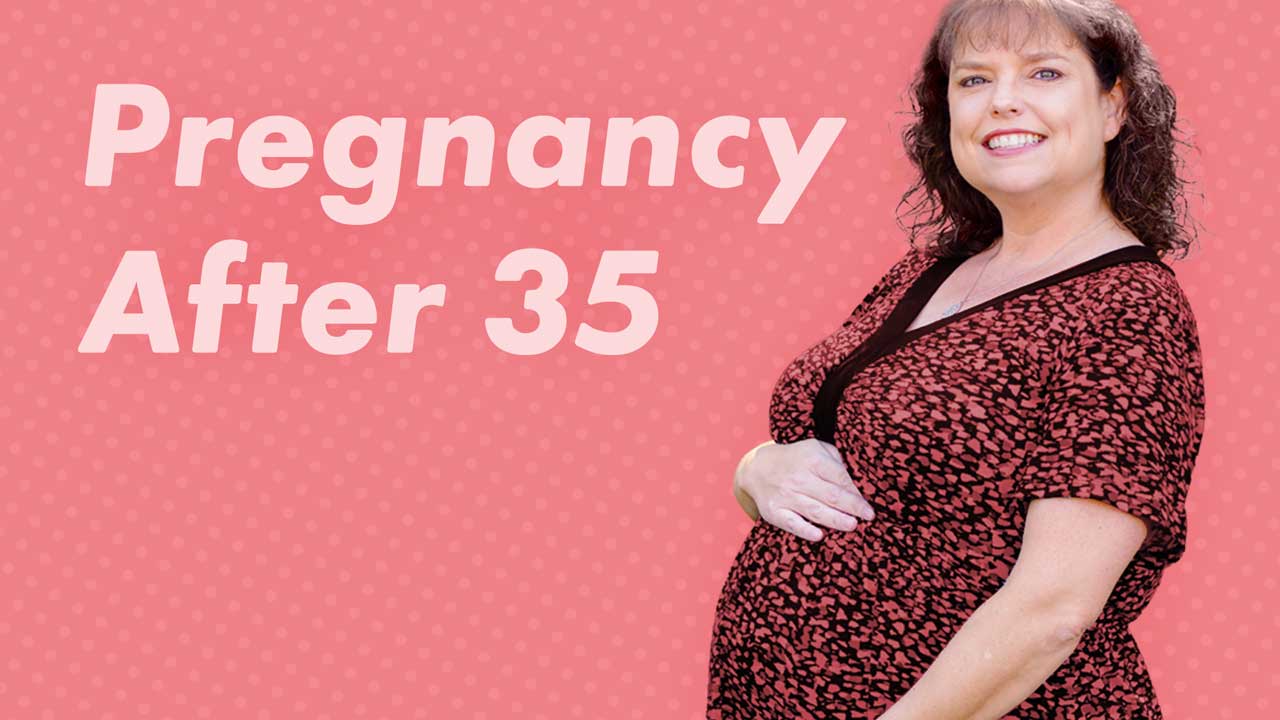The number of people delaying childbirth until after the age of 35 has increased dramatically in recent years.
This global trend appears to be influenced by a wide range of social, economic and cultural factors and is mirrored by a corresponding decline in pregnancies at a younger age (Londero et al. 2019).
In Australia alone, almost 27% of people gave birth at age 35 or more in 2022, compared to just 5.7% in 1975 (ABS 2023).
This upward trend in the age of parenthood, due in part to the availability of highly reliable contraception and advances in assisted fertility technology, brings with it new challenges for parents and maternity teams alike.
Factors that Influence the Timing of Conception
Many Australians are becoming parents at an older age due to reaching important life stages, which typically come before having children, at a later age than in earlier generations. For example:
- Leaving home
- Achieving economic independence
- Entering into a long-term relationship or marriage.
(ABS 2023)

Special Considerations for People Who Are Pregnant Over the Age of 35
Typically, older parents want to be as parents as possible and seek more information about birth preparation compared to younger mothers, yet, this can also be a source of additional anxiety and present challenges for the maternity care team (Lampinen et al. 2009).
As Li et al. (2014) note, all pregnant patients - irrespective of age and parity - should be given information about the risks and benefits of different birth settings, but older patients should also be advised about the increased risk of needing a hospital birth.
Adverse Pregnancy Outcomes
Pregnancy at advanced maternal age, defined as age 35 years or older, is usually thought of as a ‘high-risk’ pregnancy (WNHS 2023).
Advanced maternal age is associated with a higher risk of:
- Gestational diabetes
- Placenta praevia
- Miscarriage
- Chromosomal abnormalities
- Pre-eclampsia
- Small for gestational age (SGA) baby
- Preterm delivery
- Induction of labour
- Stillbirth
- Miscarriage
- Postpartum haemorrhage
- Caesarean birth.
(Hawke 2021; Better Health Channel 2023; WNHS 2023)
It’s thought that health problems that are more common with age may also contribute to the risk of pregnancy complications in people aged over 35. For example, pre-existing diabetes mellitus or hypertension becomes more common with advancing age, and this should be considered if the risks associated with advanced maternal age are to be accurately assessed (Dekker 2023).
This is why people are generally advised to get as healthy as they can prior to conception, and, where possible:
- Quit smoking and avoid passive smoking
- Maintain a healthy weight
- Avoid alcohol and drugs
- Maintain a healthy diet
- Check for and treat any sexually transmitted infections.
(Pregnancy Birth and Baby 2024)
Promoting Healthy Pregnancy in People Over 35

Understanding how older parents perceive their pregnancy risk is key to offering them effective antenatal care and encouraging them to adhere to healthy behaviours throughout their pregnancy (Bayrampour et al. 2012). Perhaps, as Blomberg et al. (2014) suggest, the answer is to individualise antenatal care based on age grouping, the aim being to improve the outcomes in the age groups with less favourable obstetric and neonatal outcomes - though, as they conclude, further research is needed to confirm any suggested benefits.
As Kenny et al. (2013) point out, the past few decades have revealed steady growth in mean maternal age at childbirth, especially in the most highly-resourced countries of the Western world. With increasing age comes a range of adverse pregnancy outcomes that are independent of parity and will require maternity services to adapt and respond to the specific needs and risks of this group of women.
Topics
References
- Australian Bureau of Statistics 2023, Australian Women Having Fewer Children and Later in Life, Australian Government, viewed 2 August 2024, https://www.abs.gov.au/media-centre/media-releases/australian-women-having-fewer-children-and-later-life
- Bayrampour, H, Heaman, M, Duncan, K & Tough, S 2012, ‘Advanced Maternal Age and Risk Perception: A Qualitative Study’, BMC Pregnancy and Childbirth, vol. 12, no. 1, viewed 7 August 2024, https://bmcpregnancychildbirth.biomedcentral.com/articles/10.1186/1471-2393-12-100
- Blomberg, M, Birch Tyrberg, R and Kjølhede, P 2014, ‘Impact of Maternal Age on Obstetric and Neonatal Outcome With Emphasis on Primiparous Adolescents and Older Women: A Swedish Medical Birth Register Study’, BMJ Open, vol. 4, no. 11, viewed 7 August 2024, https://bmjopen.bmj.com/content/4/11/e005840
- Dekker, R 2023, Evidence on: Pregnancy at Age 35 and Older, Evidence Based Birth, viewed 5 August 2024, https://evidencebasedbirth.com/advanced-maternal-age/
- Hawke, W 2021, Advanced Maternal Age: Your Essential Guide to Pregnancy After 35, Healthscope, viewed 5 August 2024, https://princeofwalesprivatehospital.com.au/news/advanced-maternal-age-your-essential-guide-pregnancy-after-35
- Kenny, L, Lavender, T, McNamee, R, O’Neill, S, Mills, T & Khashan, A 2013, ‘Advanced Maternal Age and Adverse Pregnancy Outcome: Evidence from a Large Contemporary Cohort’, PLoS ONE, vol. 8, no. 2, p.e56583, viewed 7 August 2024, https://journals.plos.org/plosone/article?id=10.1371/journal.pone.0056583
- Lampinen, R, Vehviläinen-Julkunen, K & Kankkunen, P 2009, ‘A Review of Pregnancy in Women Over 35 Years of Age’, The Open Nursing Journal, vol. 3, pp.33-38, viewed 6 August 2024, https://www.ncbi.nlm.nih.gov/pmc/articles/PMC2729989/
- Li, Y, Townend, J, Rowe, R, Knight, M, Brocklehurst, P & Hollowell, J 2014, ‘The Effect of Maternal Age and Planned Place of Birth on Intrapartum Outcomes in Healthy Women With Straightforward Pregnancies: Secondary Analysis of the Birthplace National Prospective Cohort Study’, BMJ Open, vol. 4, no. 1, p.e004026, viewed 6 August 2024, https://bmjopen.bmj.com/content/4/1/e004026
- Londero, A, Rossetti, E, Pittini, C, Cagnacci, A & Driul, L 2019, ‘Maternal Age and the Risk of Adverse Pregnancy Outcomes: A Retrospective Cohort Study’, BMC Pregnancy and Childbirth, vol. 19, no. 1, viewed 5 August 2024, https://bmcpregnancychildbirth.biomedcentral.com/articles/10.1186/s12884-019-2400-x
- Pregnancy Birth and Baby 2024, Trying for Pregnancy After 35, Healthdirect Australia, viewed 5 August 2024, https://www.pregnancybirthbaby.org.au/trying-for-pregnancy-after-35
- Women and Newborn Health Service 2023, Advanced Maternal Age, Government of Western Australia, viewed 5 August 2024, https://www.kemh.health.wa.gov.au/~/media/HSPs/NMHS/Hospitals/WNHS/Documents/Clinical-guidelines/Obs-Gyn-Guidelines/Advanced-Maternal-Age.pdf?thn=0
 New
New 
